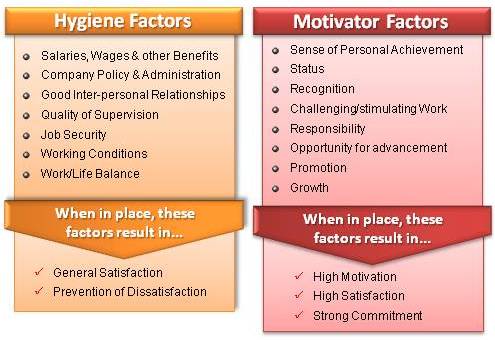Posts by John Dudovskiy

Described as a “complex social process, rooted in the values, skills, knowledge, and ways of thinking of both leaders and followers” (Gallos, 2008, p.1), leadership, and studies on leadership represent important points in both theoretical and practical levels. At the same time, it is important to stress that “studies of leadership differ, often greatly, in their assessment of the leader’s impact on firm performance” (Wasserman et al., 2010, p.28). Nevertheless, “leadership in management involves concern both for task performance and for people’s needs, aspirations and expectations” (Sadler, 2003, p.82) The increasing level of importance of leadership in modern organisations can be explained by referring to highly dynamic nature of the marketplace, increasing importance of employee motivation in terms of achieving organisational objectives, and constant search for additional sources of competitive advantage (Grout and Fisher, 2011) Furthermore, a direct link between the quality of organisational leadership and the level of employee motivation has established by Kellerman (2010). In a management project involving several organisations and using observation primary data collection method Kellerman (2010) has found positive correlation between the level of effectiveness of leadership practices within organisations and the level of employee motivation. According to Lepard and Foster (2003), amid the increasing importance of effective leadership within organisations the task of measuring the level of efficiency of leadership practices still remains to be complex and ambiguous. Authors further claim that “the exercise of leadership is sometimes viewed as an art that resists measurement” (Lepard and Foster, 2003, p.5). References Gallos, J.V. (2008) “Business Leadership: A Jossey-Bass Reader” 2nd edition, John Wiley & Sons Grout, J. & Fisher, L. (2011) “What You Need to Know about Leadership” John Wiley & Sons Kellerman, B. (2010) “Leadership: Essential Selections on Power, Authority, and Influence” McGraw-Hill Professional Lepard, D.H. & Foster, A.G. (2003) “Powerful…

Intensifying forces of globalisation have caused the numbers of expatriates to increase in many counties around the globe. An expatriate is anyone “living or working in a country of which he or she is not a citizen and who can be classified as possessing skills critical to the success of the performance of foreign subsidiaries” (Weber, 2011, p.1). While the skills and competencies brought by expatriates can be highly beneficial for businesses, as well as, for the development of a host country economy; expatriate human resources are influenced by a range of factors. This article analyses the influence of international perspective of employment laws on expatriate human resources. Specific issues discussed in the article include labour law, expatriates, and the impact of legislations issued by international bodies upon expatriate human resources. Labour law and expatriates Specific issues covered by labour law in HR include recruitment and selection, pay and benefits, employment rights, employment contract, provision of training and development, assurance of equal opportunities for all employees, health and safety issues etc. Each of these issues can be analysed from the spectre of expatriate human resources. Recruitment and selection of expatriates differs from recruitment and selection of resident candidates in a way that specific attention needs to be paid to the issues of adaptability to a new culture, candidate’s level of cross-cultural awareness in general, and the level of empathy to the local culture in particular, family situation of candidates, his or her language skills etc (Briscoe et al., 2008). The issues of pay and benefits, as an important aspect of employment covered by employment law represent another point where expatriate human resources are directly influenced. Specifically, a set of related issues such as medical insurance of expatriates and their retirement plans are regulated to the labour law of local…

Marketing tactics of the business need to be developed according to the overall strategic positioning of the brand. This point can be effectively explained with the use of 4P’s of marketing, also known as marketing mix that stand for product, price, promotion, and place. In other words, the use of marketing tactics in general and individual elements of marketing mix in particular should correspond to the strategic positioning of the company. Conversely, in occasions where there is no link between strategic positioning and marketing tactics within an organisation the substantial proportion of financial resources committed to the implementation of the marketing tactics is going to be wasted. In case of GlaxoSmithKline (GSK), for example there is a clear link between strategic positioning of the brand and marketing tactics utilised in a way that the latter supports the former. To put it simply, the manner in which product, price, promotion, and place marketing mix elements are dealt with by GSK is fully in line with strategic positioning of the brand. Specifically, GSK strategic positioning relates to achieving market leadership in terms of size and product range, and accordingly, marketing tactics selected by GSK such as emphasizing R&D scope of the company are closely linked to this positioning. The merits of relationship marketing for GSK marketing strategy are immense. Effective utilisation of relationship marketing allows GSK to increase the levels of customer attraction and retention, possibility of charging customers for intangible aspects of customer relationships, and the possibility of obtaining valuable feedback from customers.

A major work in the field of employee motivation is done by Frederick Hertzberg (1964) that includes Two-factor Theory among other works of the author. According to the Two-Factor Theory a distinction has to be made in the workplaces between motivators and hygeine factors. Motivators cause the employees to enhance the level of their performance and effectiveness in the workplace and include career growth, responsibility, achievement etc. Hygeine factors, on the other hand, are essential in the workplaces in order for the employees not to be dissatisfied, at the same time, when these factors do not cause satisfaction. Hygiene factors include job security, financial compensation, the quality of management etc., whereas motivator factors are recognition of contribution by management, personal and professional growth opportunities, status associated with the position etc. It is important for managers to be able to make clear distinction between motivators and hygiene factors. This is because while the provision of hygiene factors may lead to greater level of employee satisfaction, it does not necessarily contribute to the level of employee motivation. Therefore, apart from ensuring the provision of hygiene factors in an effective manner, managers need to invest in motivational factors as well.

Regardless of its industry, size or other variables, firm’s marketing strategy needs to be aligned with the overall corporate strategy in order for the firm to be able to grow in long-term perspective. To put it simply, rather than being independent of corporate strategy, strategic marketing needs to be able to contribute to the achievement of strategic objective an en efficient manner. It has been stated that “because the link between marketing strategy and shareholder value has not been made, boards have tended to look at two other more transparent strategies. One has been cost reduction – sometimes disguised by more appealing names such as reengineering, downsizing or right sizing. …The other common remedy has been acquisition” (Doyle, 2008, p.19). References Doyle, P.(2008) “Value-Based Marketing” 2nd edition, John Wiley

Relationship marketing can be defined as attracting, maintaining and enhancing customer relationships and its importance is increasing with the intensifying level of competition for all industries. Rossiter and Percy (1998, p.55) offer the definition of relationship marketing as the maximisation of long-term gain for the consumer, as well as, manufacturer. The essence of relationship marketing is related to building long-term relationships with customers instead of conducting one-time transactions with customers. The objectives of relationship marketing are “to identify and establish, maintain and enhance, and, when necessary, terminate relationships with customers and other stakeholders at a profit so that the objectives of all parties involved are met” (Brink and Berndt, 2009). References Brink, A. & Berndt, A. (2009) “Relationship Marketing and Customer Relationship Management” Juta Publications Rossiter, JR & Percy, L, 1998, Advertising Communications and Promotion Management, 2nd ed., Boston, McGraw-Hill.

Introducing change and improvements regularly in various business processes has become one of the basic conditions of survival in a competitive global marketplace of today. However, even when the importance and necessity of change is understood by many its implementation in practice is associated with a set of substantial challenges caused by a range of reasons such as loss of power, fear of unknown, job security, economic factors etc. (Zimmerman, 2011). This article analyses and evaluates diversification strategies implemented in Ford Motor Company by its President and Chief Executive Officer (CEO) Alan Mulally. Ford Motor Company is global auto manufacturer that employs about 164,000 members of workforce in about 70 plants worldwide (Annual Report, 2011). The article covers three main themes: main drivers of change in Ford, key changes introduced by Alan Mulally, and an analysis of change management style of Alan Mulally. Main Drivers of Change in Ford Motor Company By 2006 when Alan Mulally was appointed Ford President and CEO there were a set of stark drivers of change. Specifically, at the time among other issues “Fords major problems was consensus management in the process of designing automobiles” (Herbold, 2011). For example, Ford Fusion sedan introduced in the same year was not equipped with navigation and side air bags, despite the fact that most of the competitor cars of the same class were equipped with such accessories. Analysis conducted by Mulally has identified that the main reason behind such a practice was high level of involvement of finance department over the design and functionality of cars (Fuller, 2011). In other words, in order to bring down the costs of manufacturing, finance department have been asking engineers and designers to be engaging in excessive cost saving when designing cars and equipping them with technological gadgets and functionalities.…

The definition of the concept of time has been associated with ambiguities and even contradictions. For instance, time has been described as “time nothing more than the occurrence of events in sequence, on after another” (Olpin and Hessen, 2012, p.167), and “a resource that, when lost or misplaced, is gone forever” (Kerzner, 2009, p.286). The definition of time management has been offered as “the process of skilfully applying time to finish and perfect a specific activity within time constraint” (Harris, 2008, p.22). However, there is no single definition of time that fully captures all aspects of the concept. Becker and Mustric (2008) divide time into two categories: quantitative and qualitative. It can be specified that “quantitative time is seen to represent time as quantities, that is, time can be measured and counted into seconds, minutes, days, weeks, months, and years” (Wu, 2009, p.5). Qualitative time, on the other hand, is associated with a meaning of an activity the time is spent on. Similar to the concept of time, there are varying opinions amongst secondary data authors regarding the definition and role of time management. For instance, it has been noted that “time management is about taking charge, carefully, consciously, purposefully – not shrinking from difficulties, but engaging them” (Kristan, 2010, p.4). Moreover, some secondary data authors also note that “time management is not an end itself. It is the means to an end. When linked with setting and meeting goals it provided a way of getting really high achievement out of individuals and others with whom they come into contact” (Pearson and Thomas, 2010, p.49). Marquis and Huston (2009), on the other hand, disagree with the term of time management, and argue that time cannot be managed in any ways, but rather individuals can manage events in their lives in…

Strategic marketing can be defined as “identification of one or more sustainable competitive advantages a firm has in the markets it serves (or intends to serve), and allocation of resources to exploit them” (Business Dictionary, 2012). As opposed to short-term view on marketing, strategic marketing calls for a structured and strategic approach in formation of marketing objectives, as well as, selection and implementation of marketing techniques and communication channels in order to achieve these objectives (Avasarikar and Chordiya, 2007). Practical benefits offered by strategic marketing include searching and identifying competitive edge for the business, easily clarifying long-term and short-term marketing objectives, obtaining guidance for operational decisions, and gainig a strong sense of the purpose for the company (Egan and Thomas, 2012). Strategic marketing process is divided by Cant et al. (2009) into three steps: planning, implementation, and evaluation. The planning step in strategic marketing process involve such activities as analysing current situation, setting specific goals, and formulating strategies that would assist in achieving these goals. Importantly, analysis of current situation in the marketplace should be undertaken with the primary aim of identifying gap in the market and sources of competitive edge for the firm. During the implementation step the chosen strategy is implemented on a practical level and all of the necessary financial and human resources are secured and attracted for this purpose. Unforeseen circumstances may occur during strategy implementation step that can create substantial challenges for management (Burrow, 2008). These difficulties may result due to the changes in the marketplace or inefficiencies associated with the formulating of the marketing strategy. The last step, evaluation deals with analysing the outcome of strategy implementation and comparing results against goals that have been set during the planning step. One of the main objectives at this stage can be specified as identifying…

The principle of prioritising involves categorising tasks and goals according to the level of their importance and urgency, and giving priority to the most important and urgent tasks amongst the others (Hansen, 2011). This principle has been addressed by Covey (1990) in a comprehensive manner. Specifically, Covey (1990) introduces the time management matrix in the following manner: Square 1 Urgent and Important Square 2 Important, but Not Urgent Square 3 Urgent, but Not Important Square 4 Not Important and Not Urgent Time management matrix Covey (1990) recommends that people should primarily concentrate on important tasks in order to reduce the numbers of urgent tasks. In other words, within the Time Management Matrix illustrated above, Covey (1990) argues that concentrating on activities within the Square 2, reduces the numbers of activities within the Square 1. Moreover, according to the author, activities within the Square 3 need to be delegated, whereas activities within the Square 4 need to be avoided altogether. It has been stated that “priority setting is perhaps the most critical skills in good time management, because all actions we take have some type of relative importance” (Marquis and Huston, 2009, p.189). Kennedy (2004) urges to comprehend the differences between efficiency and effectiveness in managing time and states that efficiency relates to deal with assigned tasks in an appropriate way, whereas effectiveness involves choosing appropriate tasks to deal with. References Covey, S. (1990) “The Seven Habits of Highly Effective People” Fireside Hansen, C.K. (2011) “Time Management for Department Chairs” John Wiley & Sons Kennedy, D.S. (2004) “Time Management for Entrepreneurs” Entrepreneur Press
